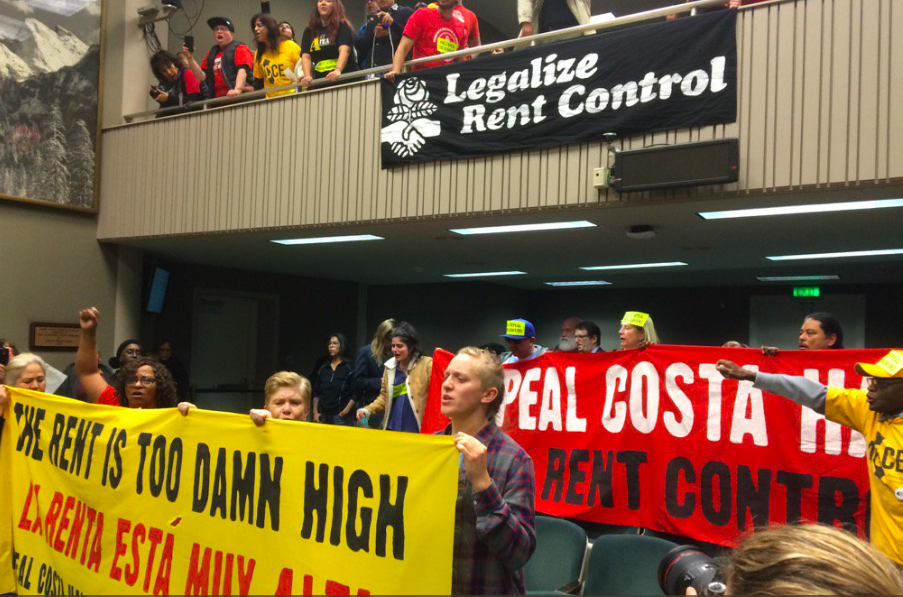Constraints on development, including zoning and environmental rules, have little or no impact on housing prices in the United States, a new study from economists at the Federal Reserve Bank of San Francisco shows.
The study, also connected to the National Bureau of Economic Research, directly contradicts the fundamental economic thesis that has driven housing policy in the state for years: That development constraints have created high housing prices.
From the study:
The standard view of housing markets holds that the flexibility of local housing supply— shaped by factors like geography and regulation—strongly affects the response of house prices, house quantities and population to rising housing demand. However, from 2000 to 2020, we find that higher income growth predicts the same growth in house prices, housing quantity, and population regardless of a city’s estimated housing supply elasticity. We find the same pattern when we expand the sample to 1980 to 2020, use different elasticity measures, and when we instrument for local housing demand. Using a general demand-and-supply framework, we show that our findings imply that constrained housing supply is relatively unimportant in explaining differences in rising house prices among U.S. cities. These results challenge the prevailing view of local housing and labor markets and suggest that easing housing supply constraints may not yield the anticipated improvements in housing affordability.
The authors are prominent and widely respected economists: John Mondragon of the Federal Reserve Bank of San Francisco, and Johannes Wieland, who works with the Federal Reserve Bank of San Francisco, NBER, and the University of California, San Diego. They were assisted by PhD candidate Schuyler Louie at UC Irvine.

The economists used extensive data from cities all over the country, including places like Houston, which has no zoning and very few “constraints,” and California cities where it’s more time consuming for builders to get permits.
The data goes back to 1980.
They used what’s known as an OLS linear regression tool, which allows you to study trends that have many linked causes, and then examine the extent to which each individual input affects the outcome.
Plenty of factors impact the price of housing. The demographic shift that started in the 1980s, when college graduates started moving back to cities and away from suburbs, had an impact. The job mix in a city has an impact. There are many more.
But what the study found is that the single most important factor, one that far outweighs “constraints,” is the income and wealth of the people who are moving into a city.
Cities that allow almost unlimited development and cities that have strict limits show the same price hikes in comparison to the income of the residents.
This is consistent with what some other studies have found. Vancouver, BC, for example, has added tens of thousands of new housing units, with few constraints—and remains one of the most expensive cities in North America.
The study notes that it reflects the views of the authors, not of the Federal Reserve Bank of San Francisco.
From the report:
The 2024 Economic Report of the President devotes an entire chapter to arguing that constrained housing supply is the main impediment to affordable housing and advocating for relaxing regulatory constraints (Council of Economic Advisers, 2024, Ch. 4) and a vast body of work has documented evidence in support of this logic (Molloy, 2020). If this perspective were correct, one would expect higher income growth to cause higher house price growth and lower house quantity growth in more constrained cities relative to less constrained cities. However, using four standard measures of housing supply constraints from the literature, we find that cities measured to have more restrictive housing supply show the same growth in house prices, quantities, population and rooms per person in response to higher income growth from 2000–2020 as cities that seem less constrained. This is true across all the measures of housing constraints, if we extend our sample to cover 1980 to 2020, and if we instrument for housing demand using the plausibly exogenous increase in housing demand from pandemic-era remote work.
In short, we establish that measures of local housing supply constraints are quantitatively not important for understanding how shifts in demand translate into house price and quantity growth across U.C. cities. This finding challenges the standard view that supply constraints are very important in explaining rising house prices across cities and suggests that efforts to relax housing constraints may have negligible effects on house prices and quantities.
The Yimbys have already criticized the report for using data for single-family houses and condos. But that data is more robust and accurate than data on rents—and most economists agree that prices for single-family homes and rental prices move pretty closely in the same direction (except for rent-controlled properties).
If this report is accurate, and I have yet to see anyone question the data or the analysis, then the entire approach that the likes of state Sen. Scott Wiener and Gov. Gavin Newsom have taken to address the housing crisis is destined to fail, badly. Removing constraints will not lead to more affordability.
The housing crisis in San Francisco, and to a great extent in the rest of the nation, is a crisis not of supply but of affordability. When the late Mayor Ed Lee, in what he called a “jobs agenda,” cut taxes for tech firms in an effort to get more high-paying employers into town, he set off a boom that brought many thousands of mostly young, mostly male tech workers who earned salaries much higher than many local residents.
Those folks moved into places like the Mission, driving up housing prices and displacing thousands of existing residents.
The Yimbs argue that had the city only allowed more dense housing to be constructed, prices wouldn’t have soared and existing residents would still be here.
But this study says the opposite.
The authors acknowledge that the results are not consistent with “the prevailing view,” which is the Yimby narrative that has dominated public policy in this city and this state for more than a decade.
And they don’t offer policy solutions, since that’s not their job.
But it seems even more clear that addressing affordability and displacement has to go beyond market-based solutions. Repealing the Ellis Act and Costa Hawkins, which allow landlords to raise rents and evict tenants, would do more to keep housing prices down in San Francisco than making things easier for market-rate developers. Raising taxes on the rich to build affordable housing is a proven solution that’s worked all over the world.
And economic inequality, which leads to gentrification and displacement, is at the heart of all of these problems.
Maybe that’s what the policy conversation should be.



